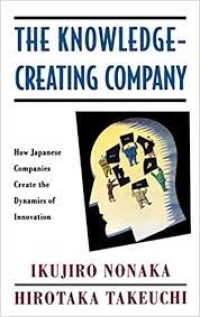
Text
The Knowledge-Creating Company:How Japanese Companies Create the dynamics of innovation
This 1991 article helped popularize the notion of “tacit” knowledge—the valuable and highly subjective insights and intuitions that are difficult to capture and share because people carry them in their heads. Years later, the piece can still startle a reader with its views of organizations and of the types of knowledge that inform them.
For example, the advice on how to distill objective and transferable, or “explicit,” knowledge from tacit knowledge—with a vivid illustration of Matsushita Electric’s efforts to build a better bread-making machine—is both arresting and actionable. The next step: ensuring that explicit knowledge is translated back into tacit knowledge that will then go on to yield yet another innovative solution.
In an economy where the only certainty is uncertainty, the one sure source of lasting competitive advantage is knowledge. When markets shift, technologies proliferate, competitors multiply, and products become obsolete almost overnight, successful companies are those that consistently create new knowledge, disseminate it widely throughout the organization, and quickly embody it in new technologies and products. These activities define the “knowledge-creating” company, whose sole business is continuous innovation.
And yet, despite all the talk about “brainpower” and “intellectual capital,” few managers grasp the true nature of the knowledge-creating company—let alone know how to manage it. The reason: They misunderstand what knowledge is and what companies must do to exploit it.
Deeply ingrained in the traditions of Western management, from Frederick Taylor to Herbert Simon, is a view of the organization as a machine for “information processing.” According to this view, the only useful knowledge is formal and systematic—hard (read: quantifiable) data, codified procedures, universal principles. And the key metrics for measuring the value of new knowledge are similarly hard and quantifiable—increased efficiency, lower costs, improved return on investment.
Ketersediaan
| B.2019004652 | Tersedia |
Informasi Detail
- Judul Seri
-
-
- No. Panggil
-
658.402 Non T
- Penerbit
- New York : Oxford University Press., 1995
- Deskripsi Fisik
-
-
- Bahasa
-
English
- ISBN/ISSN
-
0195092694
- Klasifikasi
-
658.402
- Tipe Isi
-
-
- Tipe Media
-
-
- Tipe Pembawa
-
-
- Edisi
-
-
- Subjek
- Info Detail Spesifik
-
-
- Pernyataan Tanggungjawab
-
-
Versi lain/terkait
Tidak tersedia versi lain
Lampiran Berkas
Komentar
Anda harus masuk sebelum memberikan komentar
 Karya Umum
Karya Umum  Filsafat
Filsafat  Agama
Agama  Ilmu-ilmu Sosial
Ilmu-ilmu Sosial  Bahasa
Bahasa  Ilmu-ilmu Murni
Ilmu-ilmu Murni  Ilmu-ilmu Terapan
Ilmu-ilmu Terapan  Kesenian, Hiburan, dan Olahraga
Kesenian, Hiburan, dan Olahraga  Kesusastraan
Kesusastraan  Geografi dan Sejarah
Geografi dan Sejarah